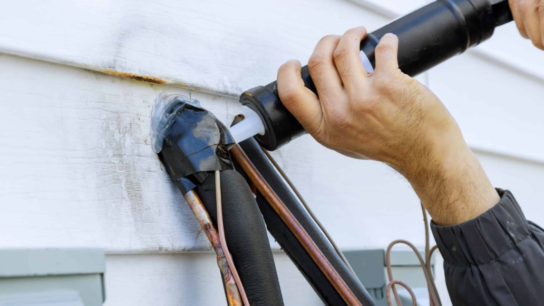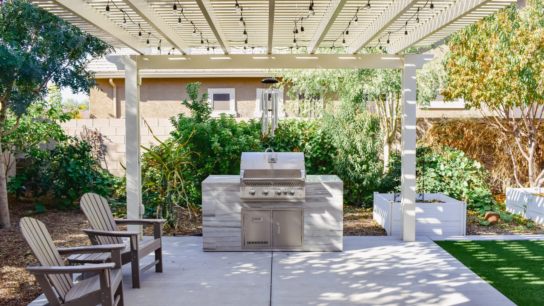Selecting the right flooring for your home involves considering factors such as durability, aesthetics, maintenance requirements, and budget. With a wide range of flooring materials available, each offering unique features and benefits, homeowners can find options that suit their lifestyle, design preferences, and practical needs. In this guide, we’ll explore the considerations for choosing the right flooring materials and share maintenance tips to keep your floors looking their best for years to come.
Subtitles:
- Factors to Consider When Choosing Flooring
- Maintenance Tips for Different Flooring Types
Factors to Consider When Choosing Flooring
1. Durability and Traffic Patterns
Consider the level of foot traffic in each area of your home when choosing flooring materials. High-traffic areas such as entryways, hallways, and living rooms may require more durable options that can withstand heavy use and potential wear and tear.
Tips:
- Hardwood Flooring: Opt for hardwood flooring with high Janka hardness ratings for durability in high-traffic areas. Choose hardwood species like oak, maple, or hickory known for their strength and resilience.
- Luxury Vinyl Plank (LVP): Consider LVP for areas prone to moisture or spills, such as kitchens, bathrooms, and basements. LVP offers water resistance, durability, and easy maintenance.
2. Aesthetic Appeal and Design Harmony
Select flooring materials that complement your home’s interior design style, color palette, and overall aesthetic. Consider factors such as texture, pattern, color, and finish to achieve the desired look and feel in each room.
Tips:
- Wood Flooring: Choose wood flooring species, stains, and finishes that enhance the ambiance of your home. Lighter woods like birch or ash can create a bright, airy feel, while darker woods like walnut or mahogany add warmth and richness.
- Tile Flooring: Explore tile options in various colors, patterns, and sizes to match your design scheme. Use mosaic tiles for artistic accents or large-format tiles for a seamless, modern look.
3. Maintenance Requirements and Lifestyle Considerations
Evaluate the maintenance needs of different flooring materials based on your lifestyle, household members, and cleaning preferences. Some flooring types may require regular maintenance, while others offer easy cleaning and upkeep.
Tips:
- Carpeting: Choose stain-resistant and easy-to-clean carpets for bedrooms or low-traffic areas. Consider carpet tiles for versatility and spot cleaning convenience.
- Laminate Flooring: Opt for laminate flooring with scratch-resistant and moisture-resistant properties for busy households with pets or children. Follow manufacturer guidelines for cleaning and maintenance to preserve its appearance.
Maintenance Tips for Different Flooring Types
1. Hardwood Flooring
- Regular Cleaning: Sweep or vacuum hardwood floors regularly to remove dust, dirt, and debris. Use a damp mop with a wood floor cleaner for deeper cleaning.
- Avoid Water Damage: Wipe up spills immediately to prevent water damage and warping. Place mats or rugs in high-spill areas like entryways and kitchens.
- Protective Measures: Use furniture pads under heavy furniture legs to prevent scratches. Trim pet nails regularly to minimize scratches on hardwood surfaces.
2. Tile Flooring
- Grout Cleaning: Clean grout lines regularly using a grout cleaner or mild detergent to prevent staining and discoloration.
- Sealing Tiles: Apply a sealant to natural stone tiles or porous ceramic tiles to protect against moisture absorption and stains.
- Avoid Abrasive Cleaners: Use non-abrasive cleaners and avoid harsh chemicals that may damage tile surfaces or grout.
3. Laminate Flooring
- Gentle Cleaning: Use a soft, damp cloth or mop with a laminate floor cleaner to remove dirt and spills. Avoid excessive water or steam on laminate floors.
- Protective Mats: Place mats or rugs at entryways and high-traffic areas to trap dirt and prevent scratches.
- Avoid Wax or Polish: Refrain from using wax, polish, or oil-based cleaners on laminate floors, as they can leave residue and dull the finish.
4. Vinyl Flooring
- Regular Sweeping: Sweep or vacuum vinyl floors regularly to remove dirt and debris. Use a damp mop with a mild cleaner for deeper cleaning.
- Avoid Abrasive Tools: Avoid using abrasive tools or harsh chemicals that may damage vinyl surfaces. Follow manufacturer guidelines for cleaning products.
- Protective Pads: Use furniture pads or coasters under furniture legs to prevent scratches and dents.
5. Carpet Flooring
- Vacuuming: Vacuum carpeted areas weekly to remove dirt, dust, and allergens. Use a carpet cleaner or professional steam cleaning periodically for deep cleaning.
- Spot Cleaning: Address spills and stains promptly using a carpet stain remover or mild detergent. Blot, don’t rub, to avoid spreading stains.
- Professional Cleaning: Schedule professional carpet cleaning every 12-18 months to maintain freshness and prolong carpet life.
By considering factors such as durability, aesthetics, maintenance requirements, and lifestyle considerations, homeowners can make informed decisions when choosing flooring materials for their homes. Implementing proper maintenance practices, including regular cleaning, protective measures, and professional treatments as needed, can extend the lifespan and beauty of your floors, ensuring they remain functional and attractive for years to come. Consult with flooring experts or contractors for personalized recommendations based on your specific needs and preferences.








